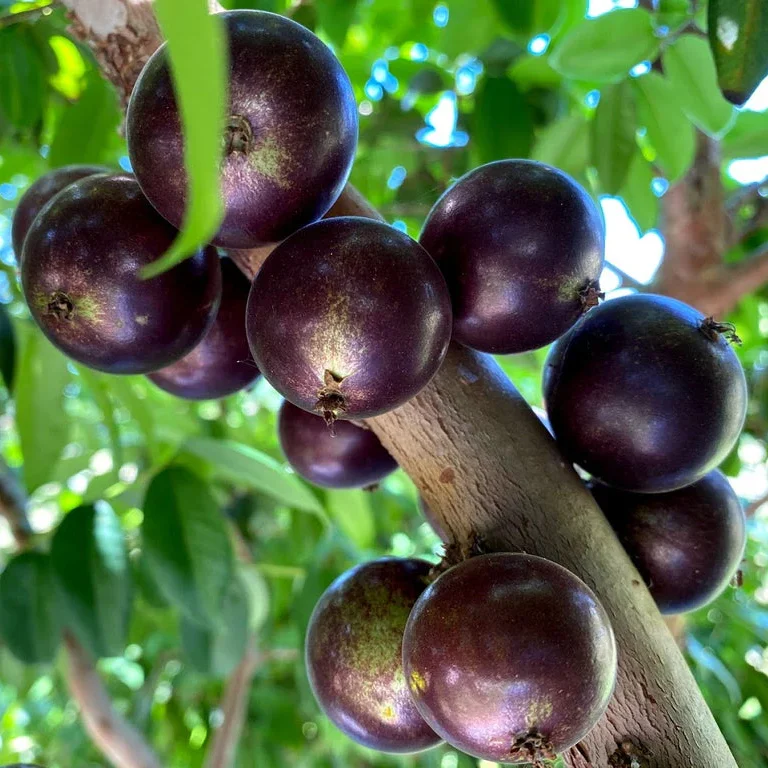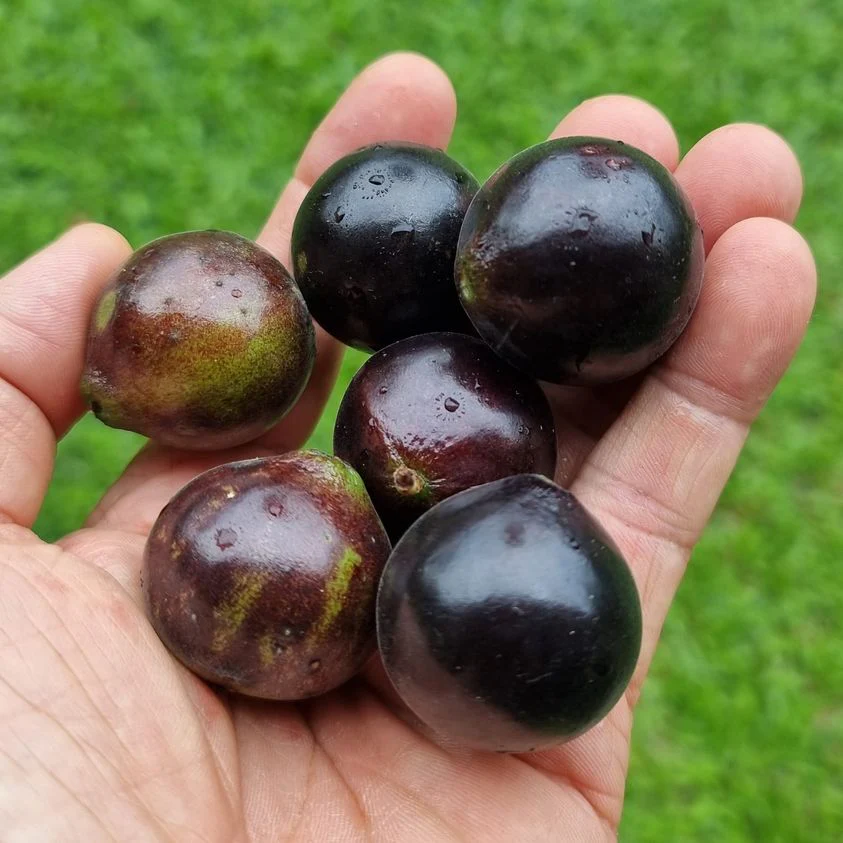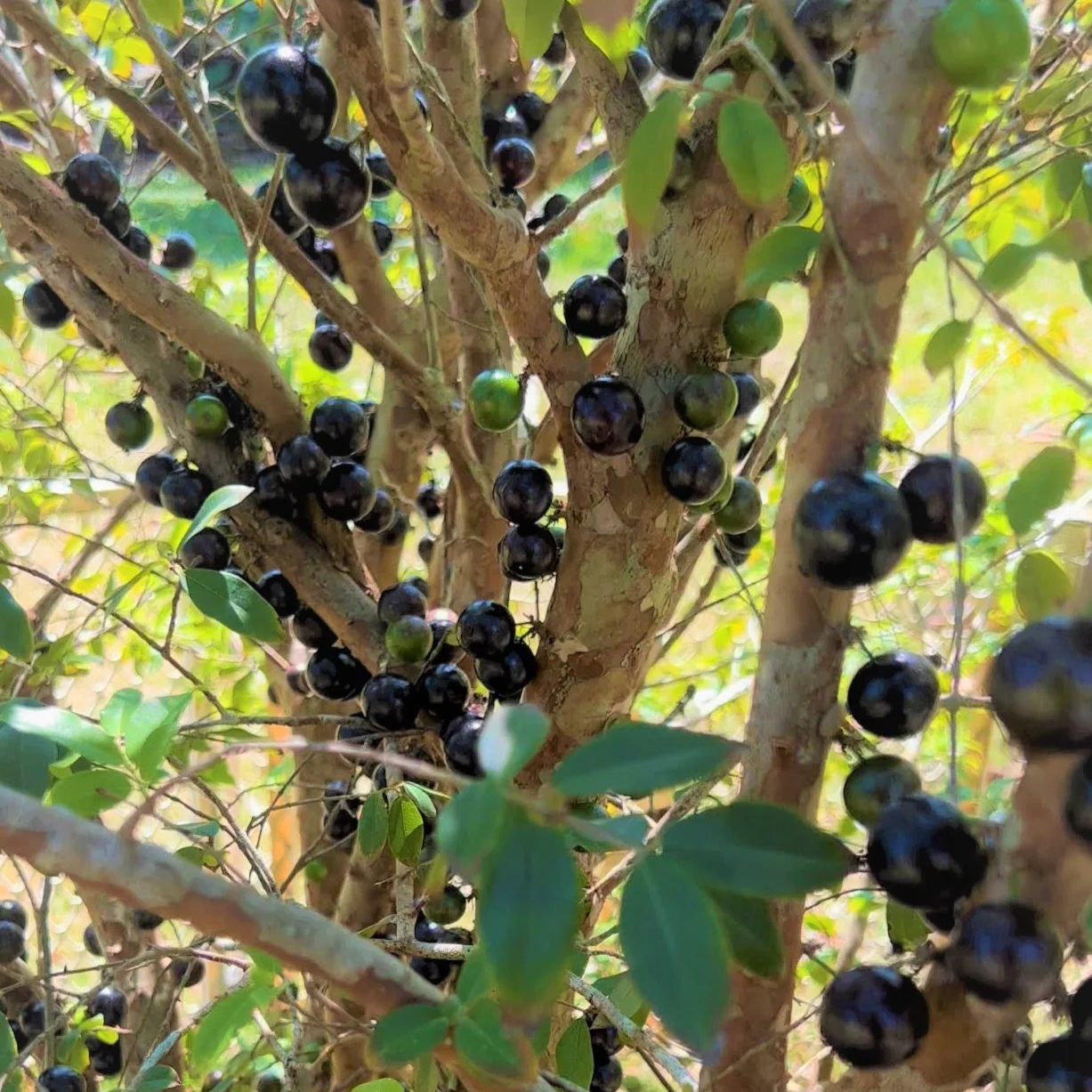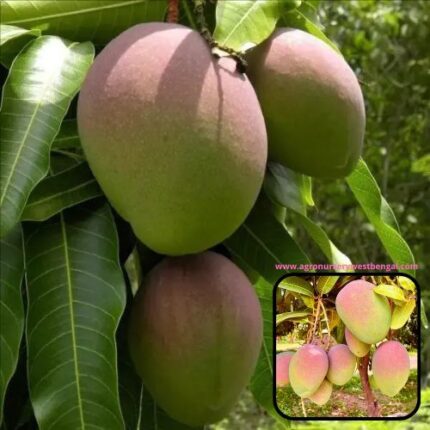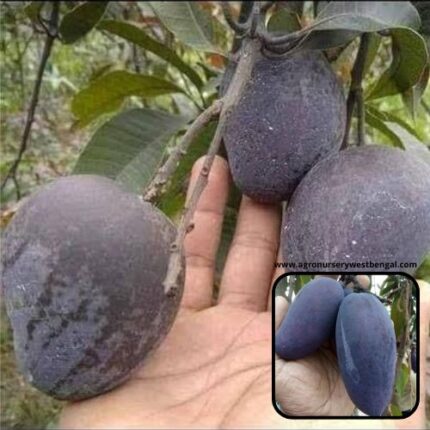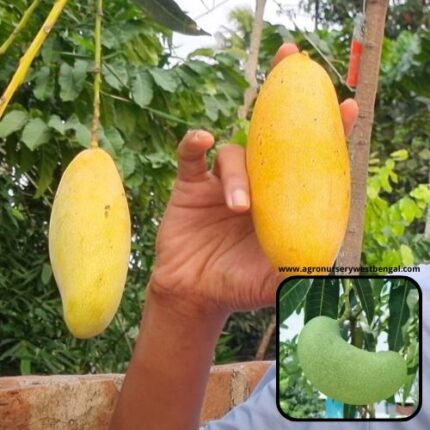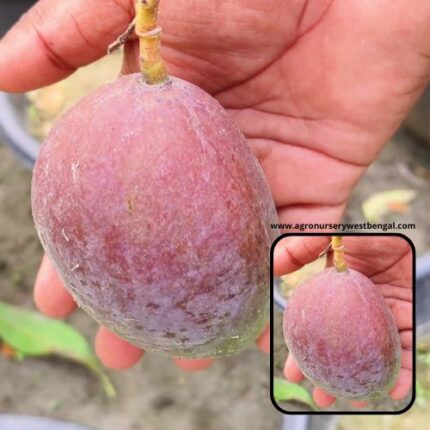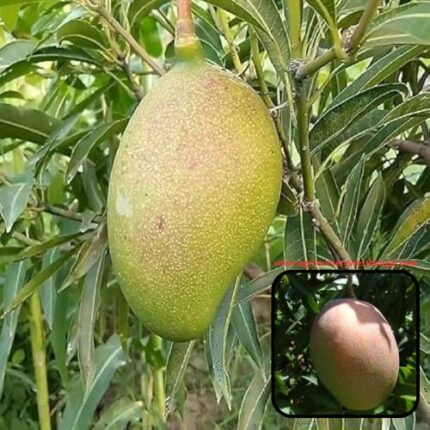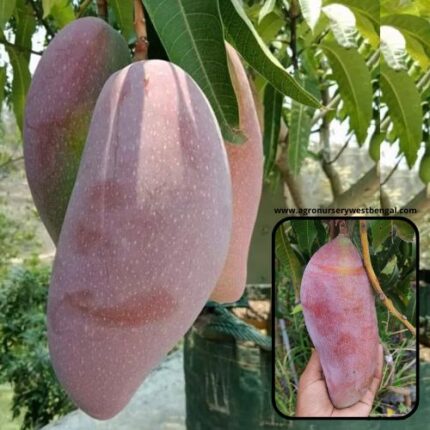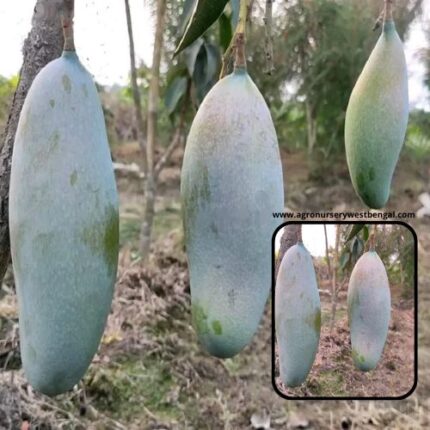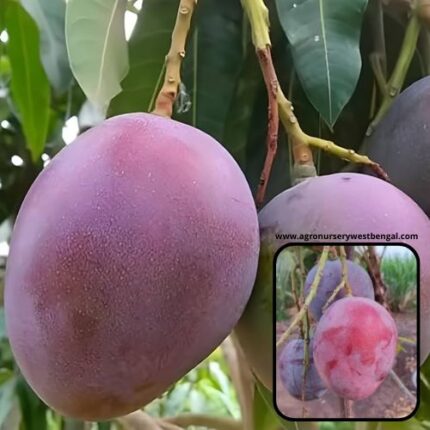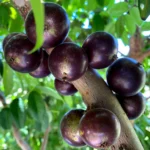
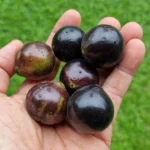
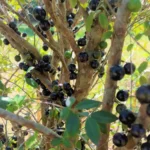
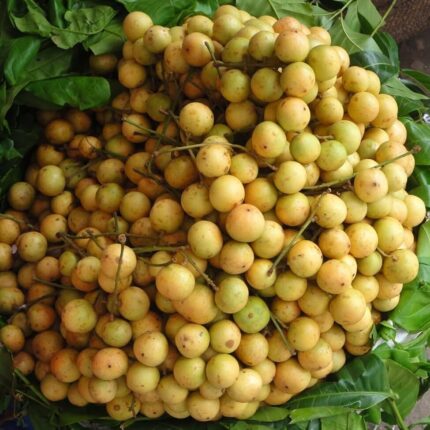
Latkan fruit plants
₹2,599 Original price was: ₹2,599.₹1,699Current price is: ₹1,699.
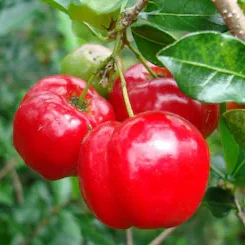
Barbados Cherry fruit plants
₹899 Original price was: ₹899.₹469Current price is: ₹469.
Jaboticaba fruit plant
₹2,899 Original price was: ₹2,899.₹1,499Current price is: ₹1,499.
Category: Fruit Plants
Description
Jaboticaba, often spelled Jabuticaba in Portuguese, is a truly unique and visually striking fruit from Brazil. It’s botanically classified as Plinia cauliflora (or sometimes Myrciaria cauliflora), and is famously known as the “Brazilian Grapetree” due to its grape-like fruit and the way it grows.
Here’s a detailed description of the Jaboticaba fruit:
-
Appearance:
- Shape and Size: Jaboticabas are typically round to slightly oval, resembling a large grape or a small cherry. They usually measure between 1.2 to 1.6 inches (3-4 cm) in diameter.
- Skin (Pericarp): The skin is relatively thick, tough, and inedible for many (though some consume it). It transitions from green when unripe to a deep, glossy, purplish-black when fully ripe. The skin can have a slightly tannic or astringent flavor.
- Internal Flesh: Inside, the fruit contains a sweet, white or rosy pink, translucent, gelatinous pulp. The consistency is often compared to a slip-skin grape.
- Seeds: Each fruit contains one to four relatively large, flat, brown seeds embedded within the juicy pulp. These seeds are typically discarded.
- Unique Growth Habit (Cauliflory): This is the most distinctive visual feature of the Jaboticaba tree. The flowers and subsequently the fruits grow directly on the main trunk and older, thicker branches of the tree, rather than on new shoots or at the ends of branches. This creates a striking sight of purple “bumps” covering the bark when the tree is laden with fruit.
-
Taste and Texture:
- Taste: Jaboticaba fruit is known for its sweet, juicy, and aromatic flavor. It’s often described as a blend of grape, lychee, and sometimes plum, with a subtle tangy undertone. The sweetness is quite pronounced when fully ripe.
- Texture: The pulp is soft, gelatinous, and very juicy. The slight crunch comes from the thin skin (if eaten) and the seeds.
-
Botanical Characteristics and Origin:
- Tree: The Jaboticaba tree is a slow-growing, evergreen, bushy shrub or small tree, reaching heights of 10-15 feet (3-4.5 meters) in cultivation, though it can grow taller in its native habitat. It has attractive, peeling, light-colored bark.
- Origin: Native to the states of Rio de Janeiro, Minas Gerais, Goiás, and São Paulo in Brazil, where it has been cultivated since pre-Columbian times. It’s also found in other parts of South America.
- Climate: It’s a tropical to subtropical plant that prefers moist, rich, slightly acidic soil. While it can tolerate mild, brief frosts, it thrives in warm, humid conditions.
- Fruiting: In its native habitat, Jaboticaba trees can flower and fruit multiple times throughout the year, sometimes five to six times, especially after periods of rain or irrigation.
-
Seasonality:
- In Brazil, it can fruit several times a year. Due to its highly perishable nature (fruits begin to ferment within 3-4 days after harvest), fresh Jaboticaba is relatively rare in markets outside of its immediate growing regions.
-
Nutritional Value and Health Benefits:
- Jaboticaba is considered a nutritious fruit, particularly rich in antioxidants, especially anthocyanins (which give the skin its dark color).
- It contains Vitamin C, dietary fiber, and various minerals.
- Traditional uses and modern studies suggest it may have anti-inflammatory, antioxidant, and even potential anti-cancer properties.
-
Culinary Uses:
- Fresh Eating: Most commonly eaten fresh, often by squeezing the pulp out of the skin and into the mouth.
- Preserves: Due to its short shelf-life, it’s widely used to make:
- Jams and jellies (the skin contributes to pectin content)
- Juices
- Wines and liqueurs (especially popular in Brazil)
- Other Uses: Can be used in tarts, pies, and other desserts.
The Jaboticaba is a fascinating fruit, not just for its sweet taste and grape-like pulp, but for the captivating sight of its berries growing directly on the tree’s trunk and branches

